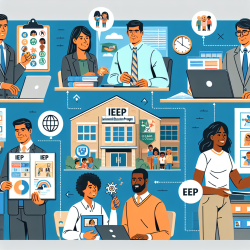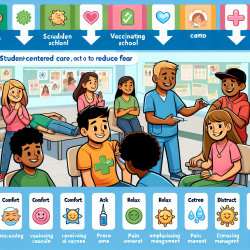As a superintendent, you know how critical Individualized Education Program (IEP) planning and meetings are for the success of students with special needs. These meetings are essential for tailoring educational experiences to meet each child's unique requirements. But let's face it, IEP planning and meetings can sometimes feel overwhelming. Today, I want to share five inspiring ways to make these processes more effective and enjoyable for everyone involved.
1. Foster a Collaborative Environment
IEP meetings should be a team effort. Encourage open communication among teachers, therapists, parents, and students. When everyone feels heard and valued, the outcomes are often more comprehensive and beneficial. Create an atmosphere where questions are welcomed, and brainstorming is encouraged.
2. Utilize Online Therapy Services
Online therapy services, like those provided by TinyEYE, can be a game-changer in IEP planning. Our online speech therapy sessions are flexible and can be tailored to fit into a student's schedule seamlessly. This allows for consistent therapy sessions without the logistical challenges of in-person meetings. Plus, our online platform offers easy access to progress reports, making it simpler to track each child's development.
3. Set Clear, Achievable Goals
One of the most important aspects of an IEP is setting goals that are both challenging and attainable. Work with your team to establish clear objectives and milestones. This not only helps in measuring progress but also keeps everyone motivated. Celebrate small victories along the way to keep the momentum going.
4. Make Use of Technology
Incorporate technology to streamline the IEP process. Use software that allows for real-time updates and easy sharing of documents. Video conferencing tools can make it easier for all stakeholders to participate, especially when coordinating with online therapy providers. This ensures that everyone stays on the same page and can contribute effectively.
5. Prioritize Student Involvement
Finally, never underestimate the power of involving students in their own IEP planning. When students understand their goals and have a say in the planning process, they are more likely to be engaged and committed. Encourage them to express their needs and preferences. This not only empowers them but also provides valuable insights that can enhance the effectiveness of the IEP.
In conclusion, making IEP planning and meetings more effective doesn't have to be a daunting task. By fostering a collaborative environment, utilizing online therapy services, setting clear goals, leveraging technology, and prioritizing student involvement, you can create a more efficient and inspiring process. At TinyEYE, we are committed to supporting schools in providing the best possible outcomes for their students. Let's work together to make every IEP meeting a step towards success.










